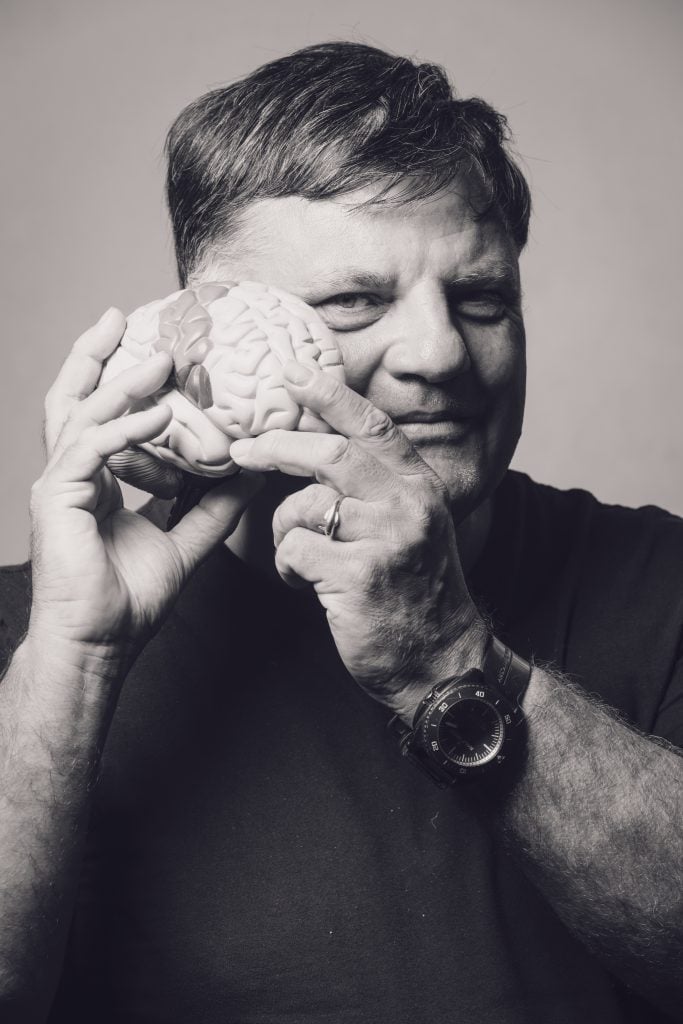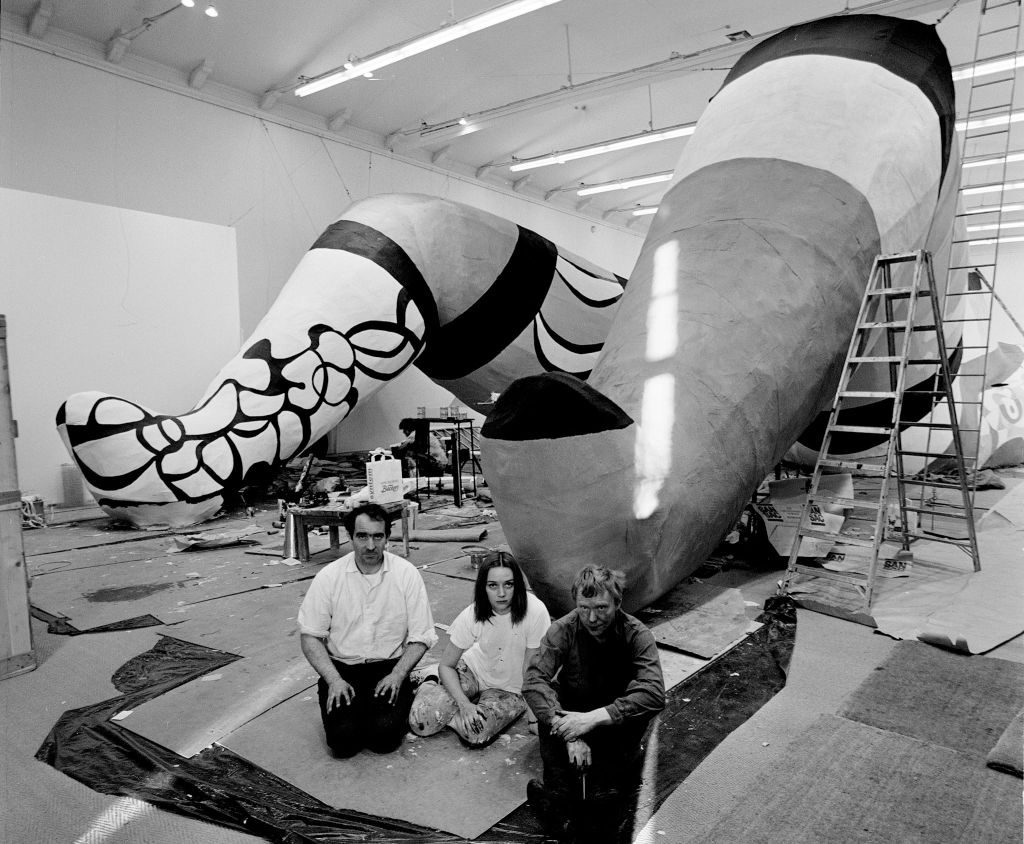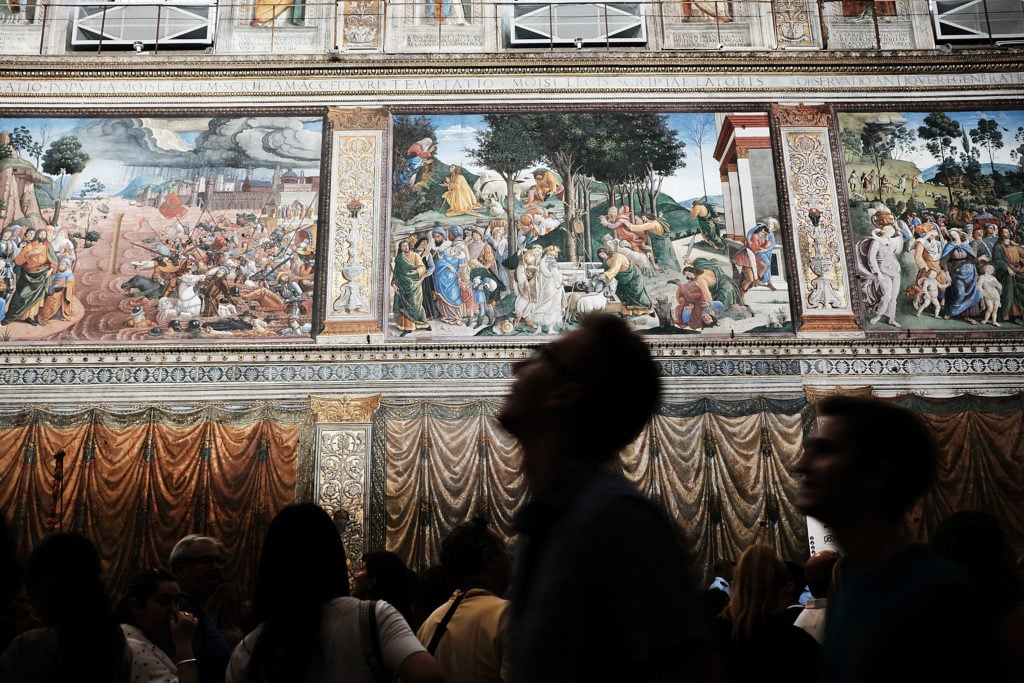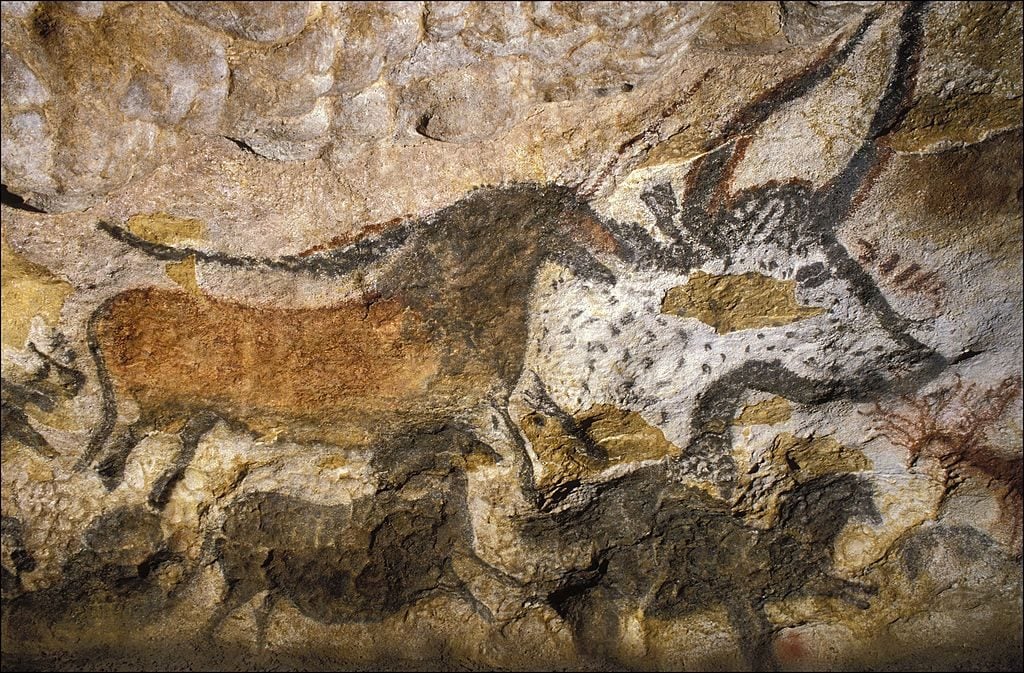Art & Tech
In an Astounding New Book, a Neuroscientist Reveals the Profound Real-World Benefits Art Has on Our Brains
Neuroscientist Pierre Lemarquis explains how we need "medicine that’s a little artistic."

Neuroscientist Pierre Lemarquis explains how we need "medicine that’s a little artistic."

Devorah Lauter

What can art do to help us? In the midst of a global health crisis, this question becomes even more urgent. While museums remain shuttered in many nations, there is science-backed evidence that seeing or making art can play a crucial role in healing our bodies and minds.
French neuroscientist, musician, and author Pierre Lemarquis has recently published a book on this fascinating subject. L’art Qui Guérit (translated: Art That Heals) takes the readers on an art tour through the centuries, spanning the Paleolithic period until the end of the 20th century, interpreting works through the lens of their healing powers—both for the viewer and the maker. The author weaves together art history, philosophy, and psychology while citing astounding current findings from his field of neuroscience about the healing power of art.
Research on the subject has been accumulating for some years. A 2019 World Health Organization report, based on evidence from over 3000 studies, “identified a major role for the arts” prevention of illnesses. And in 2018, doctors in Montreal, Canada, made headlines when they started prescribing patients who suffer from certain diseases with museum visits to visit the Montreal Museum of Fine Arts.
“A current is making its way in this direction,” says Lemarquis on a video call with Artnet News. He divides his time between actively “bringing back” the arts to the medical profession, working as a clinical neurologist, and teaching brain function at the University of Toulon in southern France.
Lemarquis is also president of a new French association called L’invitation à la beauté (An Invitation to Beauty), which offers “cultural prescriptions” to patients, including artwork viewings. The UNESCO-supported organization has created an art collection of original works to loan to patients for their rooms at France’s Lyon Sud Hospital, and this program is set to expand.
But how, exactly, can experiencing art make a person healthier? How can it help treat illness?

A terminally ill patient visits “Late Rembrandt” at the Rijksmuseum in 2015. Photo courtesy of the Ambulance Wish Foundation.
In the last couple decades, neurological findings have shed light on what happens to the brain when it experiences art. Lemarquis’s book details this new sub-field of “neuroaesthetics” which uses technologies like functional Magnetic Resonance Imaging to examine which brain pathways are engaged by either making or contemplating an artwork, and to what extent they are stimulated.
Analyzing symbolism and subject matter, Lemarquis also writes that feelings of “rebirth” are made possible. He cites visits to Michelangelo’s Sistine Chapel, as well as Niki de Saint Phalle’s giant 1966 sculpture, the HON – en katedral, where visitors could enter the sculpture’s vaginal opening.
What may seem intuitive, but is scientifically demonstrated in Art That Heals, is that art of all kinds acts on our brains in a multi-faceted, dynamic way. Neural networks are formed to achieve heightened, complex states of connectivity. In other words, art can “sculpt” and even “caress” our brains. So when we say a work of art moves us, that is physically the case.

Sculptor Niki de Saint-Phalle (C) with fellow artists Jean Tinguely (L) and Per Olof Ultvedt (R) during the construction of their giant sculpture She-a cathedral at the Museum of Modern Art in Stockholm. Photo: Hans Erixon/Scanpix Sweden/AFP Photo via Getty Images.
Lemarquis explains that, in a process helped by mirror neurons, activated when observing art, we can get the feeling that we are participating in art’s creation, or putting ourselves in the artist’s shoes. Our brains even have a tendency to “think” they are interacting with a biological entity when perceiving a figurative painting of a person, for instance.
“The beneficial effects of the arts were noted as far back as Classical antiquity,” writes Lemarquis, referring to Aristotle, who described the sensation of catharsis when observing a theatrical production, or emotions incarnated by the actors, which helped viewers better understand their own thoughts and sensations.
Later in history, Stendhal, the 19th century French author, wrote of nearly fainting upon seeing frescoes in the Basilica of Santa Croce in Florence, where he felt, “a kind of ecstasy” from being “absorbed in the contemplation of sublime beauty.” It made his heart beat so fast, he thought he’d collapse. Lemarquis attributes this reaction to his “brain invaded by emotions stimulated by the rise of adrenaline [on] his autonomous nervous system.”
But it can be hard to pinpoint what we feel about an art piece. That is in part because our reaction is the dynamic result of neural stimulation that combines areas of the brain that normally don’t operate together: the deeper recesses of our minds, which govern the pleasure and reward system, as well as other systems dealing with knowledge, perceptual, and motor circuits. Lemarquis writes that, as a result of these processes, we start to experience “aesthetic empathy,” or the impression that an artwork is part of us—that we’ve embodied its “spirit.”
“This constant back-and-forth, this empty space between the two, is the source of everything— the meaning of life,” adds Lemarquis in the interview.

The Sistine Chapel. Photo by Spencer Platt/Getty Images.
As Lemarquis explains, the art-activated areas of our brains that light up when both making or contemplating art, release hormones and neurotransmitters when stimulated, which are beneficial to our health and make us feel good.
These include dopamine (lacking among Parkinson’s patients), serotonin (found in antidepressants) as well as endorphins and oxytocin, which both can support pain management and reduction. Adrenaline and cortisone can be activated so as to have an invigorating effect on the body, or on the contrary, they can be blocked for a relaxing effect, depending on the artwork. All of these hormones can help treat mental illness, memory loss, or illnesses associated with stress, among other health concerns.
In one example from the book, a hospitalized patient in France suffering from chronic wounds on her legs finds motivation to become more active after a painting of a dancer was hung at her request in her room. It distracted her from her illness and “via mimicry, she started trying to move her legs, while simultaneously asking for fewer doses of painkillers. Little by little, she extended her walking ability, so much so, that her muscle-loss slowed, improving blood circulation, and aiding in the healing of wounds.”
In addition, some artists have been known to consciously compose their works to help heal viewers, such as the German Renaissance painter, Matthias Grünewald, whose famous Isenheim Altarpiece commissioned for a hospital was meant to inspire a sense of “inner balance” among the sick patients there. Similarly, Navajos Indians in North America have long-used healing rituals that involve art and beauty, to help “restore interior harmony” to the sick.
Interestingly, this interaction seems to work best with art that “is not a photocopy,” according to the neurologist. Lemarquis says an “unfinished” aspect of the work—the touch of its creator—helps the observer gain a sense of their own participation. Similarly, science has shown we feel a “distance” from artwork reproduced on a screen, compared to being in its physical presence.
“Our brains capture a lot more information than we are conscious of,” he says. When perceiving an artwork in-person, for instance, the brain is “lit up, by something akin to beams from a lamp.” But when the level of exposure to the work is “weakened,” as it is with a screen image, he says “quantities of information, and consequently, possible (neurological) interactions” are lost.

The 50 years of the cave Lascaux in Montignac, France in June, 1990. Photo: Jerome CHATIChatin/Gamma-Rapho via Getty Images.
Lemarquis has seen first-hand the positive impact of the arts on patients. “Will it cure them?” he says in our interview. “Maybe not, but it will allow them to better manage their illness, and once they can manage it better, they’re on the road to recovery.”
Responses have been overwhelmingly positive from patients who say they feel “less alone” at the Lyon hospital, where the group, L’invitation à la beauté, of which Lemarquis is a part, has set up an art and poetry collection for their “cultural prescriptions.” Caregivers reported patients became more mobile when exposed to their chosen artwork, which leads to improved healing in those cases. Most were noticeably more relaxed, and cheerful. L’invitation à la beauté is now set to expand its art collection to the gastro-pediatric service at a children’s hospital in Lyon.
Similar initiatives are sprouting around the world. In the US, the NeuroArts Blueprint from the Aspen Institute and the International Arts + Mind Lab (IAM Lab) at John Hopkins University, launched in September 2020. The organization says it aims to “advance the science of arts, health, and well-being” by helping “build the emerging field of neuro/arts—the storehouse of robust scientific evidence that tells us art can change the brain and the body and advance well-being in ways that can be measured, mapped, and put into practice.”
“You don’t treat an illness, you treat a person,” says Lemarquis. “You need medicine that’s purely scientific to address the illness, and medicine that’s a little artistic, to address the person, their humanity. The two are complementary. People need to dream. They need imagination.”
L’art qui guérit by Pierre Lemarquis is out now with Hazan.